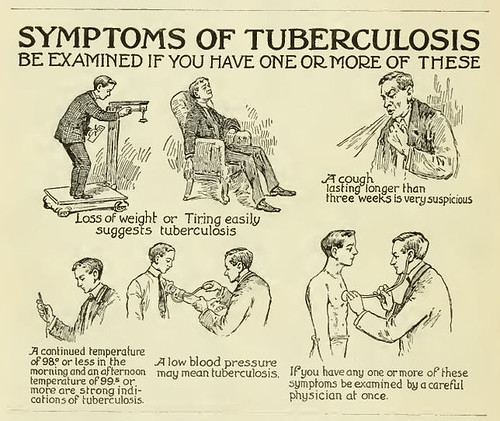How the human immune system keeps TB at bay
A new tissue culture model using human white blood cells shows how people with a latent - or symptom-free - tuberculosis infection are protected from active disease by a critical early step in their immune response, researchers say.
The model also shows, however, that some TB bacteria can find a way to get around that protection, which helps explain how latent infections turn into active and transmissible disease.
More than 2 billion people worldwide are thought to be infected with TB bacteria, and an estimated 1.3 million people died of TB in 2012. People who are infected can harbor the bacterium without symptoms for decades, but about one in 10 will develop active disease characterized by a chronic cough and chest pain.
“Many people in the United States think of TB as a distant disease that doesn’t pose much of a threat. But the recent discovery of latent infections in Kansas schoolchildren who had contact with a single actively ill patient shows how widespread infection can occur with minimal exposure,” said Larry Schlesinger, professor and chair of microbial infection and immunity at The Ohio State University and senior author of the study.
“This research might help us better predict what puts people with latent infection at higher risk of later developing active disease.”
The study is published in a recent issue of the journal mBio.
In the study, scientists used human cells to create a model of a step in the immune response when immune cells gather together around a cluster of Mycobacterium tuberculosis cells, creating what is called a granuloma. Researchers have known granuloma formulation is vital to keeping TB at bay, but haven’t been able to observe cell behavior in these clusters until now.
 Knowing more about the intricacies of this collection of cells could speed testing of experimental drugs and establish a new part of the immune response to consider targeting with therapies, said Schlesinger, also director of the Center for Microbial Interface Biology at Ohio State.
Knowing more about the intricacies of this collection of cells could speed testing of experimental drugs and establish a new part of the immune response to consider targeting with therapies, said Schlesinger, also director of the Center for Microbial Interface Biology at Ohio State.
New therapies are badly needed because the antibiotics used to treat both active and latent infections are becoming less effective with the emergence of drug-resistant bacterial strains.
The researchers created granuloma-like structures in cell cultures by adding TB bacterial cells to human white blood cell samples from people with and without latent TB infection. The cells from people with latent infection started forming large clusters as early as four days after infection, while cells from uninfected people took longer to produce smaller protective structures.
Compared to samples from uninfected people, the granuloma model containing immune cells from people with latent infection was a more effective fighter against bacteria in numerous ways: More immune cells were activated, and these cells controlled the bacterial load better. They also produced more protective proteins important to an immune response and were more capable of staving off the bacteria’s efforts to use fatty acids and sugars for energy to help them grow.
But the study showed there is a downside to all of this heightened activity. Bacteria in these high-pressure immune environments were more likely to activate genes that let them adapt by changing their metabolism, giving the TB cells a place to thrive for the long term.
“This model using human cells provides evidence that there is an immune response generated during latency that reduces Mycobacterium tuberculosis growth and thus is host protective,” Schlesinger said.
“At the same time, we can see that bacteria are adapting early in this environment, suggesting that at least a subset can develop into what we call persisters. These persisters are the bacteria that would have the potential to reactivate later to cause active disease.”
###
Co-authors of the paper, all from Ohio State, include Evelyn Guirado, Uchenna Mbawuike, Tracy Keiser, Jesus Arcos and Abul Azad, all of the Center for Microbial Interface Biology and the Department of Microbial Infection and Immunity; and Shu-Hua Wang of the Department of Internal Medicine, Division of Infectious Diseases.
###
Larry Schlesinger
Larry.Schlesinger@osumc.edu
614-292-8789
Ohio State University
Journal
mBio